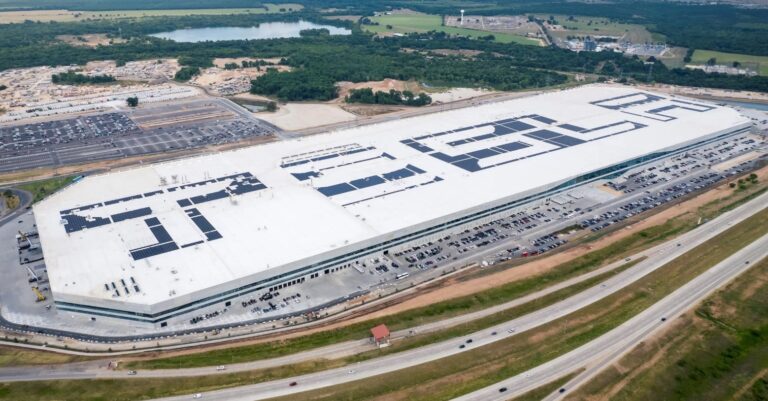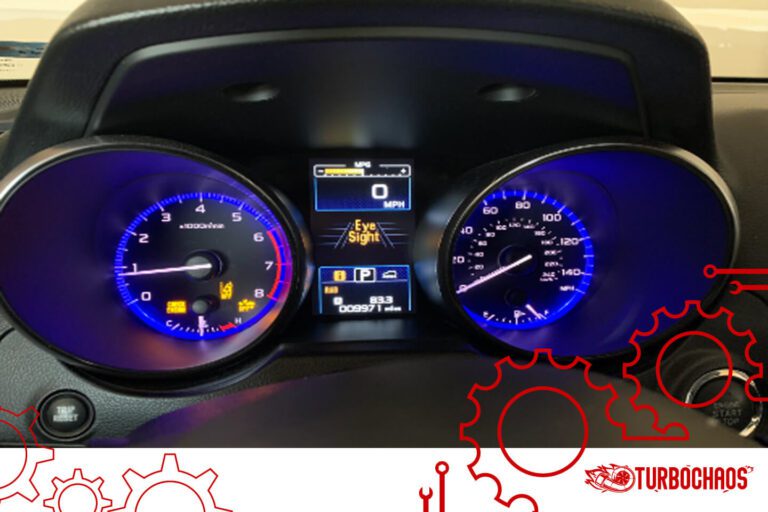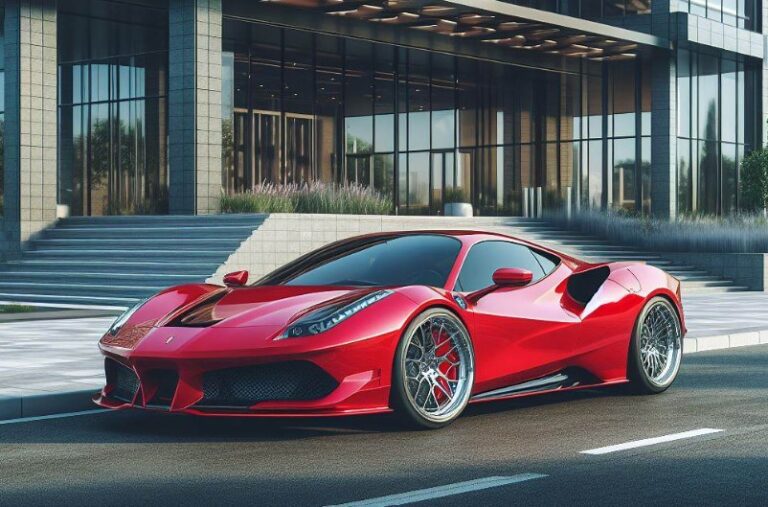Car Tire Inner Tube Size Chart (All You Need To Know)
There are various ways to determine the Car Tire Inner Tube Size Chart, and measurements can be made in inches, millimeters, or even both! A tube has a measurement to indicate the proper size, just like a tire. You may identify your size markings from the examples and descriptions of each method we’ve provided below to assist you in understanding it a little better.
It’s crucial to avoid mixing tire sizes or types on motorized equipment because heights and widths might vary greatly depending on the manufacturer. According to our research, even tires with the same size designation might occasionally differ dramatically. To guarantee optimal performance, we advise replacing your tires in pairs, just like you would with car tires.
Please keep in mind that the rim diameter measures the hole size in the tire’s center. Since the tyre-retaining rim flanges are included in the size from edge to edge of the wheel, it will be roughly 1″ larger than the marked size.
Car Tire Inner Tube Size Chart
The size of the tube is written on the side of the inner tube, either with paint or a stamp. Most of the time, the first number in the measures is the diameter of the wheel that the tube will fit. The next number is the tube’s width. A 26 x 2 bike tire will fit a wheel that is 26 inches wide and can expand to be no more than 2 inches wide. If it were any smaller or bigger, it would pinch or be too narrow.

How Do I Know What Size Inner Tube I Need?
Fortunately, most bicycles today make this an easy and straightforward job. Simply getting down by the side of one of your bike wheels and looking at the sidewall will give you all the information you require.
Between the metal rim of the wheel and the (often) black tread area of the tire is the rubber sidewall, which is shaped like an ‘O’. Generally smooth, the sidewall can occasionally be a distinct color from the remainder of the tire (as with beach cruiser tires).

Words and numerals will be embossed if you run your finger over the sidewall round. The name of the tire maker, such as Schwalbe, is frequently included. The tire code should also be present. Either metric, imperial, or ISO/ETRTO units will be used.
- The format of metric codes is “700 x 28c”.
- “27.5 x 2.1” is how imperial codes appear.
- Such ISO/ETRTO codes like “37-622.”
You could find this puzzling but don’t worry. Make a note of the code you locate and then compare it to the preceding chart. If you locate the line with your tire code, you’ll find a link to the Amazon website with my suggested inner tube.
Inner Tube Dimensions
You’d think that tire manufacturers could get together and devise a straightforward classification scheme for bicycle tires. They do, and it’s called the ISO system (formerly called the ETRTO system).
Though it hasn’t been used widely, you may still find tires with ISO numbers and metric or imperial measurements. Before the ISO/ETRTO system, almost every nation appeared to have its system.
This is one of the explanations for the “c” that appears in some metric tire codes. It stems from the outdated French classification of tire sizes, which went from “a” (the narrowest) to “d” (the widest). For whatever reason, the tire manufacturers still incorporate this.
The imperial system is not that straightforward. You might anticipate that a tire marked “292.5” would be a suitable replacement for one marked “29 x 2 12”. These two tires are unlikely to be the same size.
Although you must use a replacement tire the same size as the old one, you have more leeway with tubes. The width of the tube will change depending on how much air is inflated into it (like a kid’s balloon).
Still, the diameter must remain constant (for example, 700 or 26″). This is why inner tubes are sometimes described as having a single number for the diameter and a range for the width, such as “26 x 1.75-2.25″. Therefore, this tube is suitable for use with tires ranging in size from 261.75″ to 262.25”.
Car Tire Inner Tube Sizes
e.g. 3.00-4, 3.50-6, 4.00-8, 5.20-10, 6.00-12
The simplest size marker is this one. The first component, 3.00, merely indicates the tire’s width and sidewall height in inches. The rim diameter, expressed as -4, is given in inches. Therefore, a 3.00-4 tire would have a 4″ rim diameter, be 3″ broad, and have a 3″ sidewall. The total height of the tire would be 10″ as a result (4″ plus 3″ plus 3″).
e.g. 6-12, 7-14, 8-16, 9.5-18
Similar to the method described above. However, this approach omits the ‘.00’ bit for the first half of the size. All measurements are once more in inches. It is important to note that tires with extremely similar markings may not be compatible; for example, a 6.00-12 and a 6-12 would have very different sizes.
If you alter the tire size on a four-wheel drive tractor, the gear ratios will be affected, which may have more serious repercussions than changing the tire size for a two-wheeled rotavator. If in doubt, stick with the precise size specified by the manufacturer or fitted to the vehicle.
e.g. 4.10/3.50-4, 4.10/3.50-6, 5.30/4.50-6
This time, the tire size is divided into three pieces, each measured in inches. The first number, 4.10, represents the tire’s approximate width when mounted on the suggested wheel.
The sidewall height is the second number, 3.50, and the rim diameter is the third number. A 4.10/3.50-4 tire, then, is 4.1″ wide, 3.5″ height on the sidewall, and it fits a 4″ rim. As a result, this tire has a low profile. It is narrower than it is high, etc.
e.g. 11×4.00-4, 13×5.00-6, 18×8.50-8, 25×12.00-9
This approach is the simplest to learn and is frequently used on turf and ATV tires. The overall height of the tire, measured in inches from the bottom to the top, its width, measured in inches, and its rim diameter, measured in inches, make up the first, second, and third parts.
If you want to modify the size of your tires, you can choose the height and breadth based on your requirements, but the rim diameter must remain the same unless you also want new wheels. A 25×12.00-9 ATV tire measures 25 inches high by 12 inches wide by 9 inches broad.
e.g. 10×3, 18×4, 260×85
Although this technique is getting dated, you can still have tires imprinted in this manner. Inches or millimeters can be used for measurements; if you look at the examples above, it should be clear which. The entire tire height is the first component, followed by the width.
This size designation does not include the rim diameter, but it may be calculated easily because the tire sidewall height will match the tire width. A tire that is 18″ tall, 4″ wide, and fits a rim with a 10″ diameter is known as an 18×4 tire (18 total height minus two lots of 4 high sidewalls).
Therefore, a 4.00-10 would be the size of an 18×4 in current terms. A 260×85 tire has a height of 260mm and a width of 85mm. These measurements translate to a 10″ high, 3″ broad tire mounted on a 4″ rim. The size in use today would be a 3.00–4.
e.g. 145R10, 255/60-10, 155R12, 195/50R13
Since this is the typical method for labeling car and van tires, trailer and caravan tires are also frequently marked in this way. The first component is the tire’s width in millimeters, the second, if any, is the sidewall height represented as a percentage of the width, and the third is the rim diameter in inches.
The tire’s sidewall height is assumed to be 80% of the width when there is no percentage indication of the tire size. Sometimes, a tire with an 80% rating in size, such as 155/80-13, will be shown. When the letter ‘R’ appears in size, it denotes a radial structure for the tire.
In other words, a 145R10 is a radial tire that is 145mm wide, with a sidewall height of 116mm (or 80% of 145mm), and fits a 10″ rim. A 195/50R13 tire would measure 195mm broad, 98mm tall at the sidewalls, and fit a 13″ rim.
By converting both measurements to either mm or inches and multiplying the rim diameter by two times the sidewall height, one may get the estimated overall height of the tire.
This type of marking on ATVs and grass tires is becoming more prevalent. They are typically marked on both sides with conventional inch measurements, but you can convert them if you know how to use a calculator.
A 255/60-10 ATV tire, for instance, would measure 255mm wide, have a sidewall height of 153mm, and fit a 10″ rim. These measurements translate to 10″ width, 6″ sidewall height, and 22″ overall height (10″ rim plus two lots of 6″ high sidewalls). This would be a 22×10.00-10 in the markings on conventional ATV tires.
Does A Tube Work For Any Tire?
But, no. Different tire types are built to fit specific types of tubes. You may have tubes for an earth-moving dump truck, a riding lawn mower, or a tiny trailer tire. Each will have a different size. Sizing is divided into six broad categories:
- Bikes: Bicycle tubes are for bicycle tires and are available in a narrow range.
- Motorcycles/scooters: These tubes are thicker than bike tires but are still designed specifically for narrow rims and cannot be used on automobile rims.
- Cars, trucks, and vans: Tire tubes, regarded as little tubes in vehicles, are strong enough to be used in a car for thousands of kilometers and are frequently used for water play.

The wheels on tractors and semis are enormous—many times the size of an adult—and require massive tubes to suit them.
What Size Inner Tube Should I Choose For My Bike?
How can you determine which size you need for your bike when replacing your inner tube? There are many wheel sizes for road, MTB, touring, and children’s bikes. Wheels for mountain bikes, in particular, can be divided into three sizes: 26 inches, 27.5 inches, and 29 inches.
The European Tire and Rim Technical Organization standard is used by all tires, which further complicates issues. For example, a road would display 622 x nn, where nn represents the tire width and is equivalent to 700 x nn.
The first place to look for your tire size is on the tire wall, where this value is posted. Once you know this, you can determine the size tube you require. Some tubes will say 700 x 20–28c, which means they fit tires with a 20–28c width.
Make sure to change your inner tubes to the correct size for your tire’s diameter and width. Almost always, the tire’s sidewall has some writing indicating the size.
For example, the inner tube 26 x 1.95-2.125″ indicates that it is intended to suit a 26-inch tire with a width between 1.95 inches and 2.125 inches. Inner tubes often list the wheel diameter and width range for which they operate.
Another example is 700 x 18-23c, which is less clear but refers to the width in millimeters, or 18mm-23mm broad. 700c is the diameter of Road, Cyclocross, Adventure Road, and Hybrid bike wheels. Make sure you have the correct width tube with you because many road tires are now 25mm, and cyclocross, touring, and hybrid bike wheels may have up to 36mm tires.
Can You Install An Inner Tube In A Tubeless Tire?
A tire with a sidewall puncture or rim leakage may be challenging to seal. Car tires, bicycle tires, motorcycle tires, and farm equipment tires are all susceptible. In some circumstances, a tubeless tire can accept an inner tube. Other times, it might be risky and not recommended.
Bicycle Tires
If you want to put a tube in the tire, tubeless bicycle rims may need to be modified. Installing a tube can restore the usability of your tire in cases when the rim is damaged, or a good seal cannot be achieved.
A tube can also increase the tire’s resilience in challenging riding circumstances. To fit a bicycle tube, you need to drill out the valve hole in the rim. To prevent the hole from cutting into the valve stem, be sure to file the hole’s edges.
Motorcycle Tires
The valve stem hole may need to be drilled out of most tubeless motorcycle tires for an inner tube to fit. Be careful not to pinch the tube when installing it with the tire iron you used to reseat the tire. Bounce the tire around while you fill it to smooth out the tube and avoid catching it between the rim and the tire.
Automobile/Truck Tires
Never put tubes inside a radial car or truck tire. The majority of tubeless wheels have a drop center. The tube cannot effectively make contact with the tire because of the drop center.
As a result, the tube rim may sustain damage, or air held beneath the tube may suddenly escape, causing the air pressure inside the tube body to plummet. Compared to tube tires, tubeless tires feature thicker sidewalls.
The tire and inner tube remain in good contact thanks to the inner tube’s support for the sidewalls of tube tires. Friction between the inner tube and the stiffer radial sidewalls might result in tube or sidewall failure and a rapid blowout while driving.
Lawnmowers And Wheelbarrows
Adding an inner tube to a lawnmower, garden trailer, or wheelbarrow tire is relatively easy, and doing so can increase the tire’s lifespan. As you reseat the bead, be careful not to squeeze the tube with the tire iron. To uniformly seat the tube, fill it to the top and completely let the air out again. After that, pressurize the tube to the appropriate level.
Conclusion
Everyone wants to know Car Tire Inner Tube Size Chart with various valve lengths is suitable for using deep-section rim profiles. Ensure the valve is long enough to fit through the rim hole in deep section rims while leaving enough valve stem exposed to mount the pump. If you know your tubes need it, you can buy valve extenders to fit a shorter valve. They’re also smart to have as a backup valve in emergencies.

Matt Rex brings 12 years of specialized automotive expertise, holding a professional degree in Automotive Engineering Technology. As the founder of Turbochaos, he delivers comprehensive diagnostic services, performance optimization, and fleet maintenance solutions, backed by advanced certifications in hybrid/electric systems and ADAS technology. Its innovative methodologies have earned industry recognition while maintaining a 98% customer satisfaction rate.






